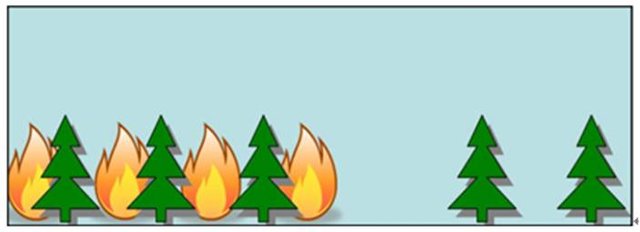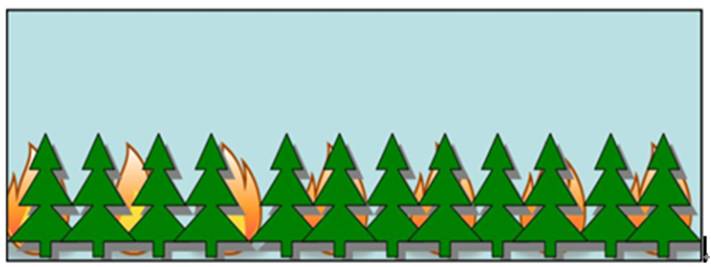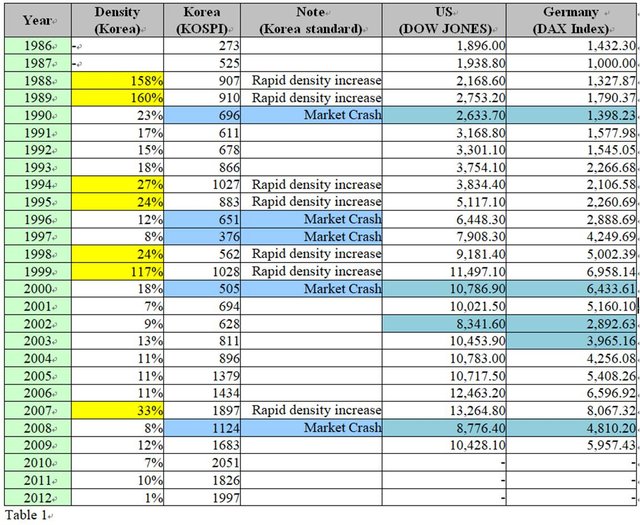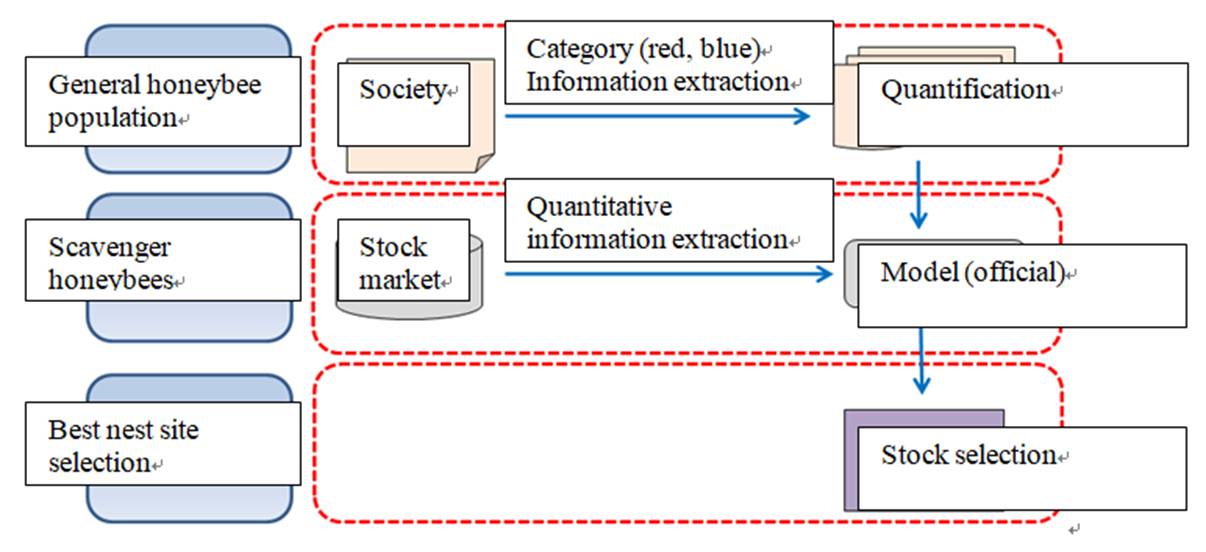MAXIMIZING STOCK MARKET PROFIT THROUGH “MOB PSYCHOLOGY” AND “MULTIPLE INTELLIGENCES” THAT ARE EMERGING COMPLEX SYSTEMS
Contents
1. Complex System Stock Market
2. Self-Organized Criticality
3. Mob Psychology – Calculation of madness (Detecting market risk)
4. Multiple Intelligences – Honeybee’s search for the maximized nest site (Stock selection)
5. The Ensemble of Mob Psychology and Multiple Intelligences
1. Complex System Stock Market
A quantifiable stock market? Will it be possible to formulate a standard based on the complex system to allow for the calculation?
“I can calculate the motions of the universe, but I cannot calculate human madness” – Isaac Newton
The methodology of calculating the motion of the universe and human madness. Newtonian physics accurately predicted the motion of the universe and his methodology also serves to play an important role in understanding economic flow such as the stock market.
However, was this methodology able to describe the recent financial crisis or predict it through calculation (mathematical model)?
Ultimately, there is a need for a new perspective in devising a calculation to predict the stock market. And the representative concept to come forth is the Self-Organized Criticality (SOC).
2. Self-Organized Criticality
“Self-Organized Criticality” is a concept that was proposed by Per Park. The goal of this concept is described within the Introduction of the book, “How Nature Works?”
“SOC is a new way of thinking about nature. Within this frame of view, nature is constantly in an unbalanced state. Nothing can happen because it is constantly within a critical state. The reason for studying SOC is to understand the complex natural phenomenon that occurs due to a simple physical principle.”
SOC can be divided into the “Self-organized” phase and the “Criticality” phase.
What is Self-organization? It refers to the process of creating a complex pattern from a simple principle. A common example can be that when a new park is made available, over time people will generate a path that is most frequently used through the park based on convenience. Eventually, the management will make a permanent path that follows this trajectory, based on the physical use of the path. This is a process of Self-organization.
Another representational example of the process of Self-organization can also be seen through “Ilya Prigogine.” He examined the mycetozoa mold and deduced the Self-Organization theory within the mold’s mechanism. He revealed that when the mycetozoa mold lacks nutrients it releases signals so that tens of thousands of these molds can all start vibrating, and upon gathering together to a certain point these molds form a cohesive bulk and becomes a single organism to intake nutrients. Then, when the environment becomes more susceptible, the molds all segregate to once again exist as single cell organisms.
This process implies how an entity that shows arbitrary behavior, upon reaching a certain level of amount produces reciprocal action to realize a new character (emergent behavior). “Mob Psychology” and “multiple intelligences” are types of this new character (emergent behavior).
The critical state can also be seen as a rapidly changing phenomenon. It can be thought of as incidents where an individual is in this tense state, so much so that over a very trivial issue, the individual reacts so intensively that the people around become uncomfortable. In a larger context, the critical state can also refer to landfalls, earthquakes, and stock market crashes.
Within a critical state, where even the most trivial incident may tip the whole system over, can these trivial incidents (and changes) be predicted?
Predicting the forest fire. “When and how does a forest fire occur?”
There are various causes (incidents) to a forest fire, which include “lightening” or even “the cigarette stud.” And the cigarette stud is an example where the incident causing the forest fire was so small.
Is there a way then to predict when a trivial stimulant (incident) can lead to a forest fire? Perhaps due to the random nature of the incidents it might not be possible to make such predictions.
But perhaps, “Is it possible to predict a small or large forest fire?” Perhaps yes. Firstly, whether the forest fire is extensive may be predicted by simply observing the density of the trees within the area. Even if the stimulant is rather formidable, if the density of the trees is sparse, it will be hard for the stimulant (incident) to lead to a large forest fire.

Fig1-a. Forest fire in sparse density

Fig1-b. Forest fire in high density
As it can be observed in the above diagrams, the extent of an incident doesn’t depend on the extent of the stimulating incident but rather on the environment (density) in which the incident occurs. So, in order for a critical state to tip over into a major incident, certain criteria need to be met.
Applying this to the stock market, the first issue that arises is that all the factors that destabilizes the status quo of the market cannot be identified or predicted. Also, the stock market crash is usually a result of a random incident but the density of the environment in which the crash occurs has to be very dense. Density is related to connectivity. In the forest fire example, the connectivity is one of physical connection. In the stock market, the connectivity is much more psychological, and this connectivity leads to the network of greed and fear.
3. Mob Psychology – Calculating Madness (Detecting market risk)
How can the madness, which leads to the market crash, be predicted?
“When a group of grasshoppers sense congestion, the group ventures to find a better environment (evasion). Soon, the rest of the grasshoppers will follow this initial group of grasshoppers that has ventured out to find better environment (alignment). One group thus stimulates the other group to move, and ultimately the group that ventures out to find new ground is increased to a very large mass (concentration). This can lead to chain reaction (positive feedback). … The large-scale crop loss caused by the grasshoppers can be predicted by knowing the exact grasshopper density threshold. Then when is the point at which the grasshopper density reaches its threshold?”
(threshold: the value that denotes the minimum stimulant force that will cause a response)
The above passage from the book, “Smart Swarm” and describes the “Dark Side of Crowd: Grasshoppers” (African grasshoppers). The description reveals the process of “Evasion – Alignment – Collection – Chain Reaction (positive feedback).” This phenomenon is similar to the interaction between the group of people traveling in opposite directions at the crosswalk.
The most important aspect of the passage however is the idea that, “The large-scale crop loss caused by the grasshoppers can be predicted by knowing the exact grasshopper density threshold. Then when is the point at which the grasshopper density reaches its threshold?”
Chapter 2 identified “mob psychology” and “multiple intelligences” as two representative characters that emerge as a result of the interaction of the groups. The dark side of the crowd is the idea of “mob psychology.” And, the key to preventing large scale crop loss is to measure the required density of the grasshopper madness.
Thus, within the platform of the stock market, when the crowd density is high the whole platform can be shook vehemently through a single trivial incident. The threshold value of this density of the crowd is then the key to predicting the frenzy of the crowd sentiment.
(threshold value: the minimum value or condition at which a certain condition change occurs; related to the phenomenon)

Table 1 shows the relationship between annual stock market density and stock index (annual). It can be seen that upon comparing the annual density, when there was a rapid increase compared to the previous year’s density (1988~1989, 1994~1995, 1998~1999, 2007) there was a large scale market crash. Therefore, this type of density operation and analysis can be used to respond to future stock market response strategies and can even be applied as a ‘put option strategies’ that is a simplified response strategy.
(Additional description of Table1)
In 1997, the density was a mere 8%. But by 1998, the density jumped up over double the previous year’s density to 24%. Then by 1999, this density increased even further to 117%. And this was the period where due to the density of the crowd, even a trivial incident could feed to the “frenzy” of the crowd and tip the conditions over, and thus this was the critical state condition. So, from 1999-2000, the stock indices reached the maximum points and a market crash of 50% was seen.
In order for there to be signs of a market crash, the density increase needs to be over twice that of the previous year. However, as seen in the table, below a certain density value (approximately 15%), even if there is a density increase of over twice that of the previous year, there is no market crash.
From the perspective of investing, these findings can be used as “supplemental indices” to strengthen the details of the strategy. If the density increase is not large compared to that of the previous year, the “strategy” should be to bet on the rise (index, required amount investment, etc.) . When the density starts to rise the “strategy” will be to simultaneously bet on the rise as well as a portion of the profit on the fall (foot option index). From this position, when the index reaches over the 280 average, the “strategy” should be to sell all the “rising bets” and maintain all “fall bets.”
The bottom rise still cannot be actualized. But based on experience, when a particular item is close to twice that of the interest loan (9%), this can be treated as bottom and it is best to bank on “rise bet.”
4. Multiple Intelligences - Honeybee’s search for the maximized nest site (Stock selection)
Other than managing the level of market risk as a preventative measure towards the stock market crash, where should the profits come from before the crash? It can be a strategy to keep it all contained within the index and profit solely through the “put option strategies” during rapid density increase. But another strategy can come from considering “multiple intelligences.”
(The theoretical background presented has been partially confirmed through manual operations. The selected stocks will be established within the portfolio with the establishment of a system).
Honeybee’s search for maximized nest site
A honeybee’s search for maximized nest site is a good example of “multiple intelligence.” Bees have a dance routine to indicate the direction of travel. This directionality is a way of indicating a new nesting site. The bees that perform this routine are a select few that have been investigating new grounds over an extended period of time.
These scavenger bees market the best nest sites to other bees through their routine dances. Over a period of time, eventually a group of bees will form around a particular region and all the bees gradually move towards this selected site.
What is important to note here is that the maximized nest site is found and informed by the “wise and experienced” scavenger bees. Also, that the scavenger bees check the sites of other scavenger bees so that the ultimate site of choice is the collective selection of all these bees is an important characteristic. Finally, all the bees that have been waiting for the ultimate decision eventually follow the informants and their choices.
The maximized nesting site for the bees entails safe space and well-insulated environment. However, there are also chances that the wrong site was chosen and during the winter, the whole group of bees will freeze to death.
This “search for the maximized nest site” can be systematized and represented as follows. (During manual operation confirmation, those shares with sudden spike were chosen most frequently).

Figure2. stock selection process based on the honeybee model
(Additional description of Figure2)
In the process of “searching for the maximized nesting site,” the multiple intelligences can be found in the scavenger bee dances that indicate directionality as well as in the distribution of these bees upon singling out the final site. The phenomenon where a particular direction is singled out just before the rest of the honeybees start to collectively migrate to the new site can be a concept of the big data. This concept of the big data is similar to the extraction of the atypical data on human activity (psychology) and quantifying this information.
There are largely two approaches to the process of stock selection – the top down method and the bottom up method. Either of these methods allow for the selection of stocks that have high value with low price. Then, these purchased products are maintained with belief and perseverance until the stock prices reach a desired point.
The stock selection, which was modeled off of the process of “searching for the maximized nesting site,” uses both the top down and bottom up methods to use the multiple intelligences of those that are more experienced to find those stocks that are high value low cost. Then, after stock selection it also includes the process of utilizing the multiple intelligences to detect the point at which the price of the purchased stock reaches a certain desired point.
5. The Ensemble of Mod Psychology and Multiple Intelligences
“The crowd cannot reach the maximum extent. Instead, the crowd pushes the individual down to the minimum standard.” The German philosopher Friedrich Nietzsche was much more pessimistic about the idea of the crowd intelligence. “A madness individual is uncommon, but within a crowd … the madness is the law.” There are of course numerous examples of utterly failed collective decisions seen through stock market bubbles as well as a result of acute survival instincts within a building on fire. However, the honeybees with their exemplary decision making process demonstrates that a high collective IQ can be achieved for the benefit of the crowd.”
This is the introductory passage found in the book, “Honeybee Democracy.” The idea that the crowd’s desires are aligned with the minimum standards is a sentiment that Nietzsche shares with Gustave Le Bon, who emphasizes his argument around this central theme in his book, “The Psychology of Peoples.”
James Surowiecki describes the boundary between negative mob psychology and positive multiple intelligences (crowd wisdom) in his book, “The Wisdom of Crowds.” He asserts that various perspectives from participants, the independent minds of the participating people, and the distributive and integrative process can produce the positive “wisdom of the crowds.” Based on these arguments, the boundary between “mob psychology” and “multiple intelligences” seem ambiguous. However, if “mob psychology” can be used to detect market critical condition and “multiple intelligences” can be used to select stocks, then this may lead to a synergy effect between these two emergent systems.
If during the process of stock selection, a dangerous site is chosen because of the ambiguous boundary between “mob psychology” and “multiple intelligences,” the information provided by the “more experienced” becomes even more crucial. The activities of these scavengers can be easily detected within the stock market, and the pattern of their behavior should inform the individual in minimizing the risks and ensuring safely through choosing the most promising sites. So, even if a dangerous site was chosen initially, the individual should be able to secure himself within the market by maneuvering away from the risks.
In “Economyths,” David Orrell asserts that, “economy is the mathematical model of human behavior.” So, in order to know the economy and to predict it, it is important to analyze and quantify human behavior. But instead of doing this in an individual level, when the individuals gather and create an interactive process “mob psychology” and “multiple intelligences” emerge to analyze the crowd’s behavior (psychology) and quantify this crowd movement. By doing so, the complex system of the stock market can be predicted with high accuracy and responded to appropriately.
The equation that quantifies “mob psychology” and “multiple intelligences” can be generalized to the international markets (generality confirmed).
Congratulations @complexsystem! You have completed some achievement on Steemit and have been rewarded with new badge(s) :
Click on any badge to view your own Board of Honor on SteemitBoard.
For more information about SteemitBoard, click here
If you no longer want to receive notifications, reply to this comment with the word
STOPDownvoting a post can decrease pending rewards and make it less visible. Common reasons:
Submit